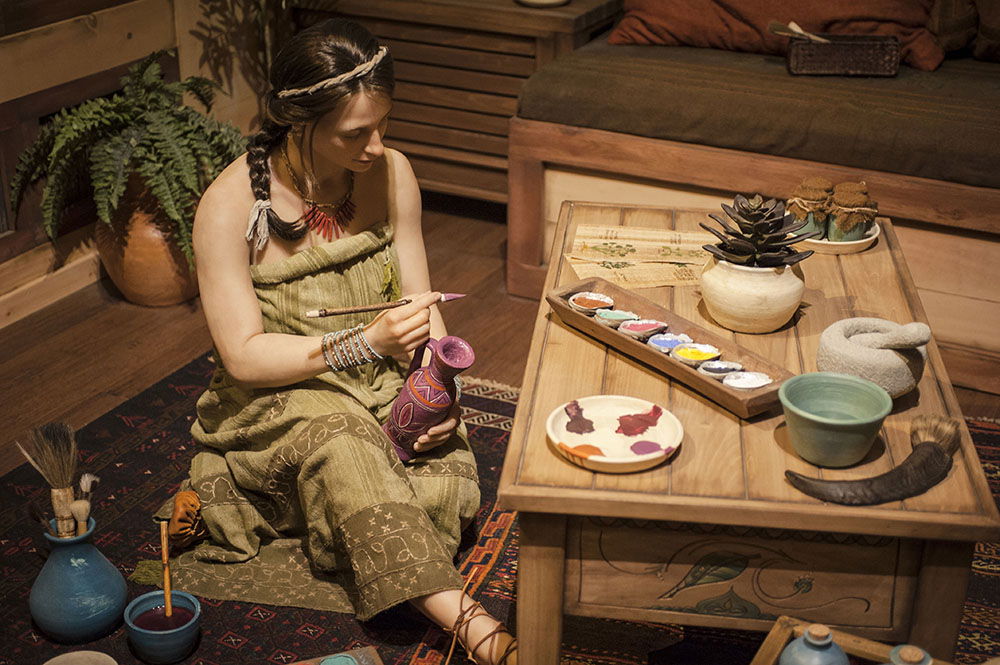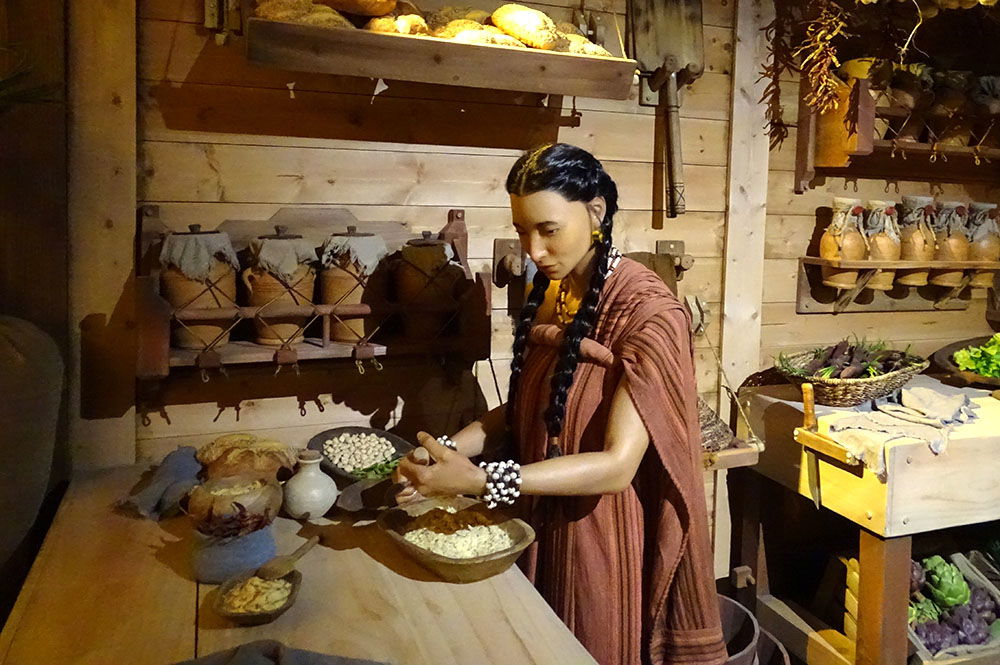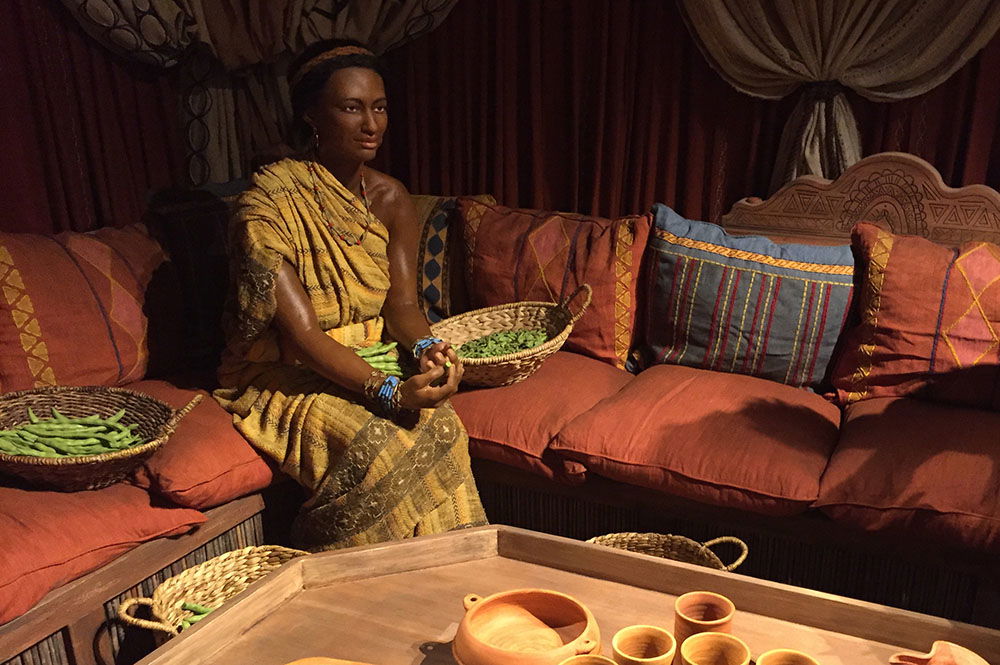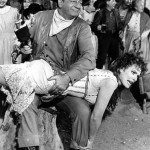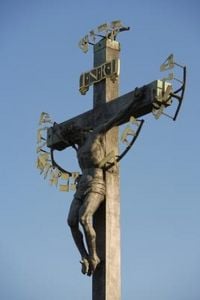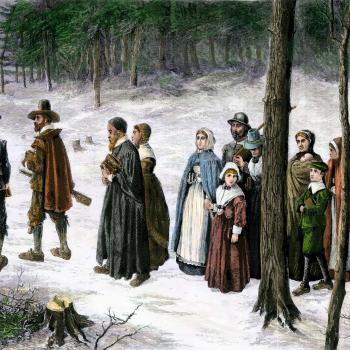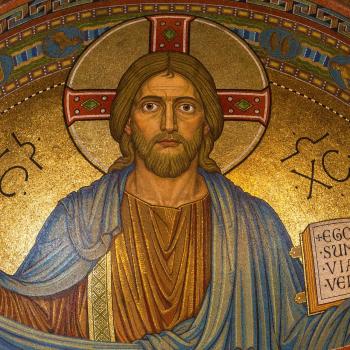Answers in Genesis has created names and backstories for each of Noah’s son’s wives. For the unfamiliar, Answers in Genesis is a fundamentalist Christian organization that runs a “museum” and an “amusement park” dedicated to young earth creationism and flood geology. These backstories they’ve created for Noah’s sons wives are weirdly complex, but I’m most interested in something else—the racial depiction. Why? We’ll get into that in a moment.
Let’s take it from the top, shall we?
Rayneh—Japheth’s Wife
Being artistic, Rayneh works closely with Emzara, sketching the ark’s animals while studying and recording their habits. In her limited free time, she enjoys making crafts and adding some flair to her family’s surroundings, such as painting intricate designs on pottery.
Rescued by Noah from a life-threatening situation when she was a little girl, Rayneh grew up around his family. She helped Japheth with his farming responsibilities, and the two eventually became husband and wife. She put her seamstress skills to good use during the ark’s construction, creating many of the clothes and tapestries seen on board.
According to tradition, Japheth was the ancestor of Europeans. So here is Rayneh, looking very, very white. And very, very artistic, as it turns out. The reason Rayneh’s backstory sounds so oddly specific—Noah rescued her from what life threatening situation exactly?—is that this whole thing functions in part as an extended advertisement for a book series Answers in Genesis is hawking—Noah: The Remnant Trilogy.
As a blogger who reviews bad Christian fiction and has also written about young earth creationism for years now, I really, really want this series. The Bible is really vague on all of this. It doesn’t give us Noah’s wive’s names, much less anything about their personality or how they came into Noah’s orbit. In other words, essentially everything in this trilogy is of necessity going to be fictional, which is odd for an organization that emphasizes sola scripture.
Moving on:
Ar’yel—Shem’s Wife
Ar’yel was raised in a remote forest village among people who worshipped false gods. She came to believe in the true God after hearing Noah speak to her people. Longing to know more about the Creator, she soon joined Noah’s family in building the ark.
Quick to take part in conversations with the rest of the family, Ar’yel loves the profound discussions about God that she has with Shem. She also enjoys reading accounts of what the rest of the world was like before it became filled with wickedness, and she prays that it will be like that again after the flood.
According to tradition, Shem was the ancestor of those living in the middle east (including the Jewish people), so it’s unsurprising that Answers in Genesis would make Ar’yel middle eastern in appearance. And again there is the overly specific detail. She lived in a remote forest village? I thought the pre-flood era was supposed to have advanced technology, cities, and an urban culture? Where did this remote forest village come from? Also, was Noah a missionary to remote forest villages?
No really, I want to know! I grew up on young earth creationist materials and as I remember it, the pre-flood world was fairly urban, and very, very sinful—not so much in the pagan gods way, though. More in the sex and murder way. Also, I was taught that the pre-flood world might have had technology we could only dream of today, because, being closer to God’s perfect creation of Adam, humans would have been more intelligent than humans today. Of course, there is diversity of thought within young earth creationism, so it’s possible that Answers in Genesis is taking a slightly different approach—I want this series.
It wasn’t until I got to Ham’s wife that I grew really concerned, though.
Kezia—Ham’s Wife
Kezia grew up around Noah’s family as the ark was being constructed, and she trusted in the Creator from her youth. When her parents left to pursue other interests, Kezia decided to remain with Noah’s family.
Similar to her husband, Kezia is a hard worker. She is the medical expert of the group, having learned the craft from her mother. She uses her skills to treat sick or wounded family members or animals. In fact, Ham and Kezia grew very close as she cared for the severe wounds he received from an animal attack, and they married shortly after he recovered.
Rayneh, the ancestor of the Europeans, is the artistic one. The defining feature of Ar’yel, the ancestor of the Jewish people, is her interest in profound discussions about God. But what is the first thing this page says about Kezia, the ancestor of sub-saharan Africans? That she’s a hard worker. But why? Why lead with that for Kezia, and not for the other wives of Noah’s sons?
I have a concern.
When the United States practiced chattel slavery, white enslavers claimed that Africans were adapted for brute physical labor in a way that Europeans and other population groups weren’t. They claimed that Africans were designed for hard work. This was also claimed of African women, at a time when women of European descent were portrayed as physically fragile.
Okay. Sure. But that’s history. Why assume there’s any connection? That’s ridiculous! This portrayal is probably just a weird coincidence. Besides, Kezia is also described as the family’s medical expert. Well, yes. But there’s actually more going on here.
In the nineteenth century, the idea that Africans were especially well adapted to physical labor coexisted side by side with the claim that Africans were descended from Noah’s son Ham, whom Noah cursed and prophesied would serve his brothers Shem and Japheth. This was called the “Curse of Ham” and was used by white southern Christians to justify chattel slavery.
The staff at Answers in Genesis know this. They know this because they still believe part of it. Oh, not the justifying slavery part—they disavow that part. But the idea that the African peoples are the descendants of Ham? That part they still teach. Answers in Genesis claims to reject the “Curse of Ham” (and indeed to not believe in the existence of different races). But for a group that disavows the “Curse of Ham,” they sure confirm a lot of its attendant pieces.
Below is a summary of the people groups that we teach descended from each of Noah’s sons—though keep in mind there has been considerable mixing … :
Japheth: Germanic tribes (e.g., Angles and Saxons), French, Welsh, Spain, Greece, Portugal, Poland, Turkey, Russia (four major ones: Meshech, Magog, Tubal and Togarmah), Ukraine, Mongolia, Medes, Northern India, some in Southwestern China (Maio peoples), some American tribes
Shem: Jews, Arabs, Assyrians, many North Africans, Much of India, Indonesia, Armenia, Turkey, some to the Orient, Iran
Ham: Chinese, Egypt, Libya, West Africa (Phut), Middle East (Canaan), Sinai, Hindu Kush in Asia and Mizoram in Asia, many island nations of Asia, Ethiopia and lower Africa, Babylonia, some of the American tribes (e.g., Athabascans), Portugal, and Spain (due to the Moors mixing)
They have a whole damn chart.
To be sure, they’ve shaken things up a bit—some Chinese peoples are put down as Ham’s descendants as well, and the Mongols are ascribed to Japheth. But why make Japheth’s wife look European, Shem’s wife look middle eastern, and Ham’s wife look African, if it’s not that simple? What is the point of making Noah’s son’s wives racial appearances so disparate, if not to confirm nineteenth century race theory that was intertwined with the “Curse of Ham”—an idea many fundamentalist Christians still ascribe to today? If they’re so eager not to be associated with this idea, why risk confirming it for some, even by accident?
I’m going to go out on a limb here and suggest that maybe—just maybe—Answers in Genesis should have taken more proactive steps to avoid perpetuating nineteenth century American race theory in their portrayals of Noah’s son’s wives.
And really, these portrayals make no other sense.
Who did Noah’s sons’ children marry? Presumably they married their cousins, and not their siblings (or at least, not only their siblings). If this is the case—if Noah’s sons children married their cousins, and their children married their children’s children, etc., all the way up until the Tower of Babel and the separating of the people into different language groups—then why portray Noah’s sons’ wives as racially distinct? By the time you get a few generations down—by the time you get to Babel—Noah’s sons descendants would have been all intermingled. Remember, they separated at Babel, not at the door of the Ark.
There is no reason to make Ham’s wife dark skinned, particularly when doing so risks confusing people and accidentally perpetuating and enforcing the “Curse of Ham.” Add to that that they lead with Kezia being a “hard worker,” something that is not stated of Japheth’s wife, the artistic one, or Shem’s wife, the deep theological thinker. Again, yes, Kezia is also “the medical expert” of the group. I don’t think the people who made these choices were trying to be racist—I think they were being careless.
Whether or not one tries to be racist is a terrible benchmark, though. If you don’t take active steps to combat racism—if your careless decisions create a result that reinforces others’ racism—you are part of the problem. It is especially important for Answers in Genesis to be proactive given the role of the “Curse of Ham” myth in justifying chattel slavery in our history, and the reality that there are plenty of fundamentalist Christians who still believe in the “Curse of Ham,” or are susceptible to believing it.
These decisions are especially boggling given that, as I noted above, the population separated at Babel, not at the door of the Ark. Answers in Genesis has long argued that there are different race—although they don’t like that particular term—because of the confusion of languages at Babel. When God confused the peoples’ languages, those who spoke the same language banded together in each in their own group and left Babel. If those in one group had darker skin tones, so would their descendants. If those in another group had differently shaped brow ridges, so would their descendants (this is how they explained Neanderthals).
Making Noah’s son’s wives racially distinct in the way Answers in Genesis has serves no purpose except to confirm the racial ideas that undergird the “Curse of Ham.” Why not instead take this opportunity to challenge those theories? Consider this—because these women’s descendants would have intermarried, we would all be descended from all of them. If they had portrayed all three women as racially mixed, it would have brought white visitors to the Kentucky “Ark Encounter” facility face to face with the idea that they have ancestors who are not white. Instead, Answers in Genesis’ portrayal of Noah’s wives allows white visitors to look at Rayneh and conclude that they and their ancestors have been white since time immoral. This is unhelpful.
Also! Changing topics entirely: The wives of Noah’s sons already had names: Sedeqetelebab, Na’eltama’uk, and ‘Adataneses. Their names are listed in the Book of Jubilees, which is actually considered canonical by a few groups (such as the Ethiopian Orthodox Church). Sure, the book was never included in the Christian Bible, but it was written before Jesus’ time, so why not tap it as a source, if the stories you’re creating about Noah’s wives are fictional anyway? And oddly, Answers in Genesis does mention it:
Emzara—Noah’s Wife
Throughout history, many have wondered about the name of Noah’s wife. She is called Emzara in the ancient Jewish writing known as the Book of Jubilees (not found in the Bible). This name probably means “ancestor of Sarah,” and it connects her to Abraham’s wife, Sarah.
Why tap the Book of Jubilees for Noah’s wife’s name, but invent completely new names for Noah’s sons’ wives, when the Book of Jubilees names them too? It makes absolutely no sense. Sure, the names given for the wives are longer and more complicated—but why not shorten them into nicknames of a sort? Why Rayneh, Ar’yel, and Kezia instead of Sedeq, Na’el, and ‘Ada? I’m honestly curious! This seems like a weird decision!
Addendum: It also occurs to me that, according to Answers in Genesis, these women are also the ancestors of the Neanderthals, and the Denisovans, and other groups of early hominids. Given that, their thoroughly modern human appearance is also odd.
I have a Patreon! Please support my writing!

